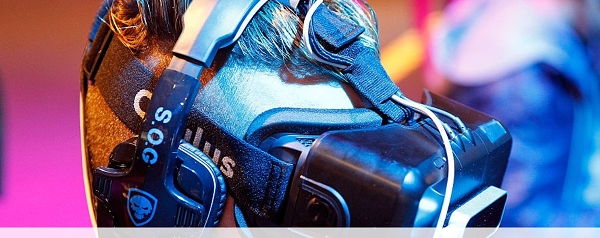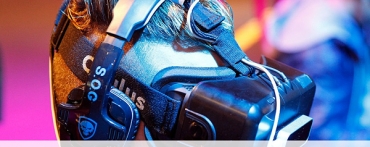
 ‘Tis the season for lists.
‘Tis the season for lists.
Top 10 songs of the year.
Five times Kim Kardashian broke the internet.
Best videos of cats wearing hats.
We all love lists, and who am I to buck a seasonal trend?
So here are my top 5 predictions for the big trends in digital for 2016*
1. Snapchat gets serious
OK, Snapchat is already a big deal.
Users are sending and viewing billions of videos and photos every day – some of it with their clothes on.
But the gamechanger for us is that Snapchat has just recruited its first team in EMEA.
Previously all the brand deals were being run out of the U.S, but now Snapchat is ready to do business on this side of the pond.
We saw Snapchat’s aspirations for engaging brands in Cannes earlier this year, with founder Evan Spiegel doing the circuit, and the notorious yellow ghost logo (Ghostface Chillah) on a giant billboard outside the Palais.
Snapchat is open for business in Europe, and I expect 2016 to be the year big brands will spend big budget to engage millennials on this ephemeral platform.
2. VR gets real
If you haven’t yet explored the world of Oculus Rift or its cheaper but no less effective alternative Google cardboard, you’re missing out.
The moment you try out a headset for the first time is literally awesome.
We’ve been talking about it for years (remember the 1992 movie Lawnmower Man anyone?) – but it’s now finally about to become a mass market reality.
Zuckerberg was the first to place a huge bet in July 2014 by purchasing then start-up Oculus Rift for $2bn. And if anyone can scale VR, it’s him.
The New York Times just gave away free Google Cardboard to its readers in the first wide-scale promotion that places headsets firmly in consumers hands (or on their heads!).
Hollywood, gaming, science, music and education are just some of the industries that are investing big in VR. (There’s also talk about immersive porn being a major trend, but maybe more on that another day…)
Consumer brands are starting to play in this space too as they look for fully immersive storytelling with audiences.
This is not the stuff of the future. This year we’ve already delivered four pilot VR programmes – and sent out our own Google Cardboards – and expect a lot more in 2016.
3. Adblocking
This is the scary one.
The entire advertising industry is petrified about the rapid rise of technology that allows consumers to properly opt out of online advertising for the first time.
And with over 200 million people having already downloaded some form of ad blocker, these fears are justified.
Apple has allowed an app that filters out ads and native ads into the app store, so that number may rise aggressively.
But what does this mean for the creative industries?
Hopefully, better advertising.
Because I don’t believe consumers hate advertising.
You only have to observe the Superbowl adbreaks in the US or the Christmas campaigns in the UK to see how beloved good creativity can be.
But cracking creative in smaller, digital, mobile-first spaces is notoriously difficult.
Creative departments will need to rise to the challenge and create ads that people WANT to watch.
We should expect less noise, less dross and more emotion, surprise and delight in 2016’s digital campaigns.
I also see adblocking as an opportunity for PR agencies to take a bigger slice of traditional ad budgets. PR has always had a better understanding of real-time storytelling and contextual conversations and this is the stuff that truly resonates online.
And if people block ads, editorial content will become even more important.
The gloves are off…
4. Facebook @ Work
Anyone with an inbox of 200 unread emails will be waiting with bated breath for the official launch of Facebook @ Work early next year.
This newest iteration of the global platform is set to disrupt the way companies communicate.
It has nearly all the functionality of Facebook but within a work setting – meaning adoption rates by employees will be seamless, unlike other internal comms tools.
Currently there are only a few hundred companies playing with Facebook @ Work, but demand is high: over 25,000 companies across the world applied to be part of the Beta.
It’s going to be a gamechanger in the way we all communicate with our colleagues.
Watch out for pictures of your boss, ‘likes’ on your projects and embarrassing pictures from the Christmas party being shared wider than ever before…
5. And finally: a 22-year-old you’ve never heard of will change everything
This probably sounds like a cop-out.
And maybe that’s true to a degree.
But the reality is that the speed of change – including new start-ups, new apps, and mobile spectrum – is accelerating at an insane pace.
Even the big tech disrupters themselves are at constant risk of being disrupted, and we haven’t even scratched the surface of industries being turned on their head by new technologies.
With millennials starting to enter the workplace, we will see a new wave of technology, new platforms and ways of communicating.
So watch out for the guy or girl who wants to change the world… because they may just do it.
The challenge for agencies and brands of course, will be staying on top of trends as they emerge.
Emoticons, gifs, memes and micro-content all represent content opportunities for brands, if they can be leveraged correctly.
The challenges will be deciding which emerging platforms to back, which to “go-first” on, which do you ignore until they are more proven, and how to measure and track ROI.
There will be plenty to think about in the year ahead.
And the pace of change is such that this list could completely change by January. But that’s what makes this industry so exciting.
Written by Adam Clyne,Head of Digital EMEA,Weber Shandwick
Source:Weber Shandwick
*Terms and conditions apply. The author reserves the right to get all predictions wrong without losing any credibility whatsoever.
